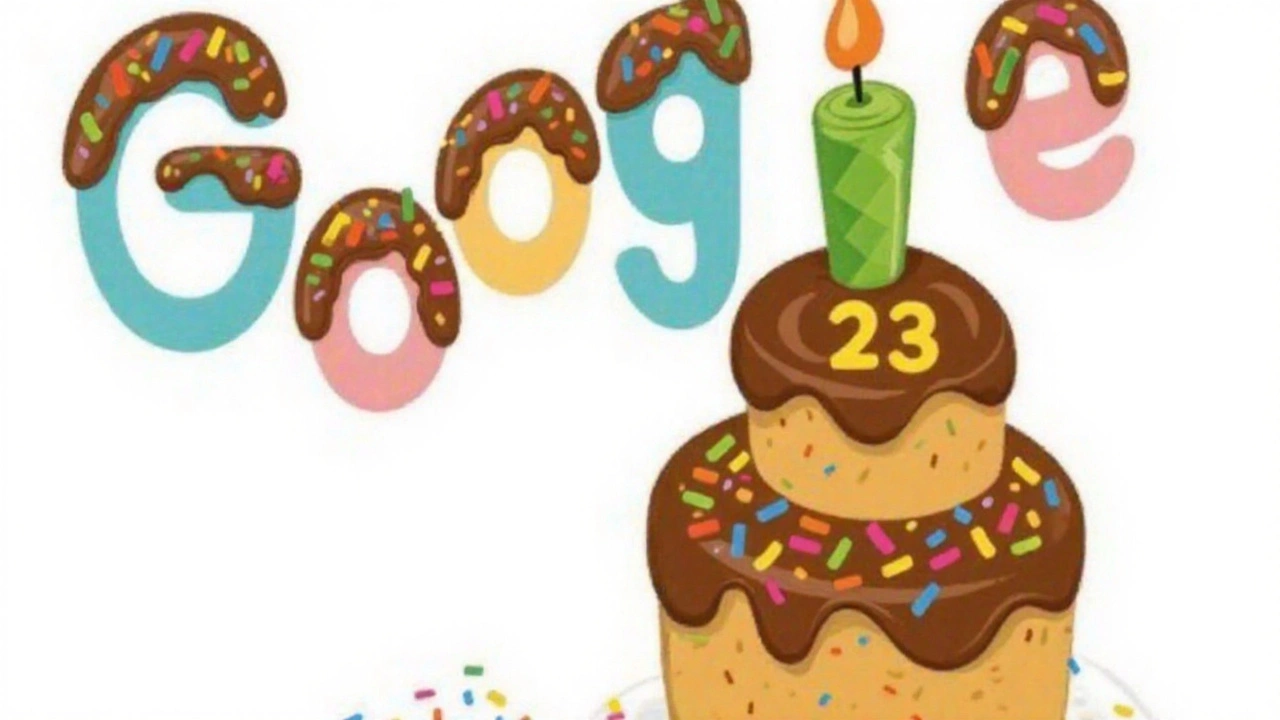The Doodle Tradition Explained
Since the late 1990s, Google has turned its homepage into a tiny gallery of art, humor, and history. The very first Google Doodle was a simple “Out of Office” banner placed by Larry Page and Sergey Brin when they took a short vacation. That modest tweak sparked a habit that now sees hundreds of doodles roll out worldwide every year. The internal team, affectionately called “Doodlers,” ranges from graphic designers to animators, and they treat each project like a mini‑campaign.
Some doodles are quick, a few hours of work, while others can take months or even years—think of the intricate tributes to historic events or cultural icons. The designs can be static images, interactive games, or animated sequences, all intended to surprise the user who lands on the search page. Over time the doodles have become a barometer of Google’s brand personality: playful, inclusive, and surprisingly daring.

Why Google’s Birthday Has More Than One Date
The biggest source of head‑scratching is the birthday itself. In 2021 Google rolled out a cake‑shaped doodle for its 23rd anniversary, complete with a candle that replaced the “L” in the logo. Fast forward to 2025, and the company celebrated a 27th birthday on September 27, using a retro version of its 1998 logo as the centerpiece. Two different ages, two different dates—what gives?
The answer lies in how you count a company’s birth. The legal incorporation of Google LLC happened on September 4, 1998, but the idea and the early search engine prototype, BackRub, were already humming in the Stanford dorms a year earlier. Larry and Sergey filed the first patent in 1997, began writing code, and even printed some early‑stage business cards. Some historians argue that the true birthday is the moment the founders first referred to their project as “Google,” while others stick to the official paperwork.
Google’s own branding team has never issued a definitive line, which leaves room for both interpretations. The 23rd‑year doodle leaned on the 1998 incorporation date, whereas the 27th‑year celebration highlighted the earliest visual identity—a nod to the pre‑incorporation era. By alternating the focus, Google subtly acknowledges both its academic roots and its corporate evolution.
Beyond the dates, the doodles serve a deeper purpose. Each anniversary piece doubles as a visual timeline, reminding users of the company’s humble beginnings and its climb to global dominance. The nostalgic throwbacks also appeal to longtime fans who remember the original rainbow‑striped logo, while newer users get a glimpse of the brand’s heritage.
In practice, the Doodlers treat each birthday as a fresh canvas. They research archival photos, interview the founders, and often embed hidden Easter eggs that only the most observant fans spot. This layered approach turns a simple celebration into an interactive story, encouraging visitors to explore the page longer—a subtle win for engagement metrics.
So the next time you see a whimsical doodle on the Google homepage, remember there’s usually a deeper reason behind it. Whether it commemorates the 23rd or 27th year, the design is a reminder that Google’s identity is built on both its official paperwork and the messy, inventive spirit that sparked in a university basement. The doodle tradition, born from a vacation note, now stands as one of the most recognizable brand rituals on the internet.



